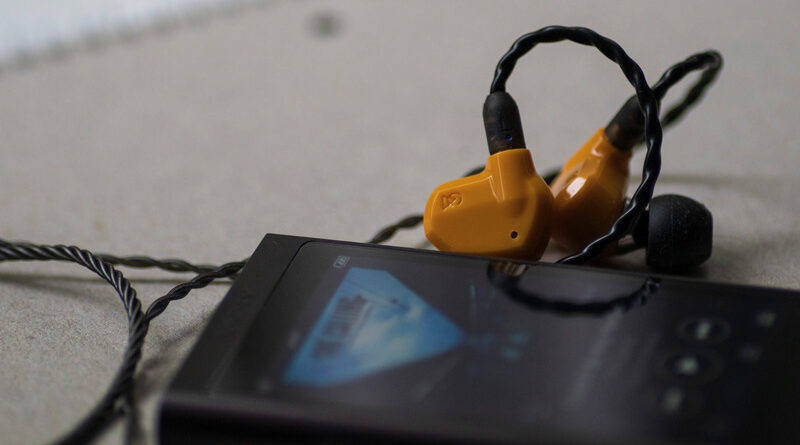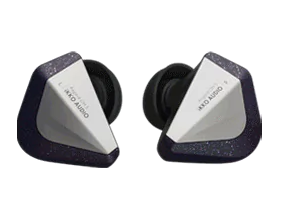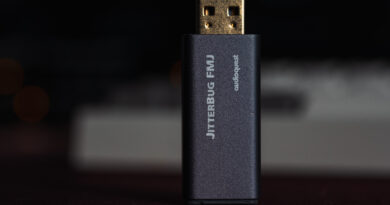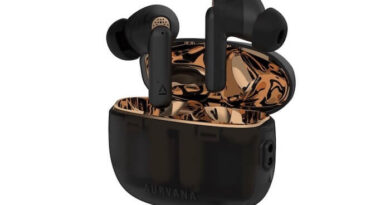Campfire Audio Honeydew Long-Term Review – Unabashedly Basshead
Pros — Accessory pack
– Hard-hitting bass
– Macro and Micro dynamics
– Good imaging and separation
Cons — Campfire Honeydew have plastic shells
– Hard-hitting bass
– Recessed midrange
– Not the most resolving in treble
– Might appear overpriced
In this Article
INTRODUCTION
Campfire Audio has a penchant for “big-bass” IEMs. They are never to shy to add some hefty dose of low-end to most of their models. The Solaris, Polaris, Comet, even the Andromeda 2020 – all of them have a robust low-end presence as part of the tuning philosophy.
Campfire Audio Honeydew aims to be the entry-level basshead IEMs in Campfire’s lineup, and one of the de-facto basshead IEMs under USD $300. I have been using the Honeydew for almost 5 months now, so this will be a long-term evaluation. Let’s see if Campfire Audio could reach the goals they set of themselves.
DISCLAIMER
Note: the ratings given will be subjective to the price tier. Ken Ball of Campfire Audio was kind enough to send me the Honeydew for evaluation.
Sources used: Sony NW-A55, Hidizs AP80 Pro
Price, while reviewed: $250. Can be bought from Campfire Audio’s Official Website.
Our generic standard disclaimer.
PHYSICAL THINGS AND USABILITY
PACKAGING AND ACCESSORIES
The unboxing experience is the signature Campfire Audio style: it feels like you are unwrapping a gift box. The accessories provided are the same as the ones with Campfire Satsuma, with the carrying pouch sporting a darker olive hue. The cable is again the Smoky Lite SPC 4-core cable with Beryllium-Copper connectors.
Supplied eartips include Final E-type (5 pairs), foam tips (3 pairs), and Campfire silicone tips (3 pairs). There’s also the Campfire lapel pin. I have no qualms at all regarding the stock accessories, esp at this price point.
5/5
BUILD QUALITY
The shell is ABS plastic, which is not my favorite material overall. Plastic is fragile and metal shells or resin shells will last longer. The spout is stainless steel though. The bright yellow color of the shells are quite a looker and I find them unique. Your mileage may vary.
There is a single vent on the face-plate for pressure equalization. The housings have mmcx termination which has been robust for me over 5 months of use. One thing I can’t get over is the seam where the shell pieces join. It’s no big deal but something I notice. As was my conclusion with the Satsuma, I would’ve preferred a metal or resin shell here.
3.5/5
COMFORT, ISOLATION, AND FIT
The Honeydew are very comfortable to wear due to their lightweight and ergonomic fit. Isolation is average though as the vent on the back lets some noise in.
4/5
SOURCE AND EARTIPS
Most of the listening was done on the Sony NW-A55 as I found it to be one of the best pairings. Stock cable and Spinfit CP-100+ tips were used, as the stock E-type tips made the bass overbearing.
DRIVER SETUP
Campfire utilized a single bio-cellulose diaphragm (probably mixed with PET) in a dual-cavity setup for the Honeydew. They also have their 3D-printed acoustic chamber that acts as wave-guide and suppresses resonance. It’s refreshing to see more single-dynamic IEMs in the midrange market.
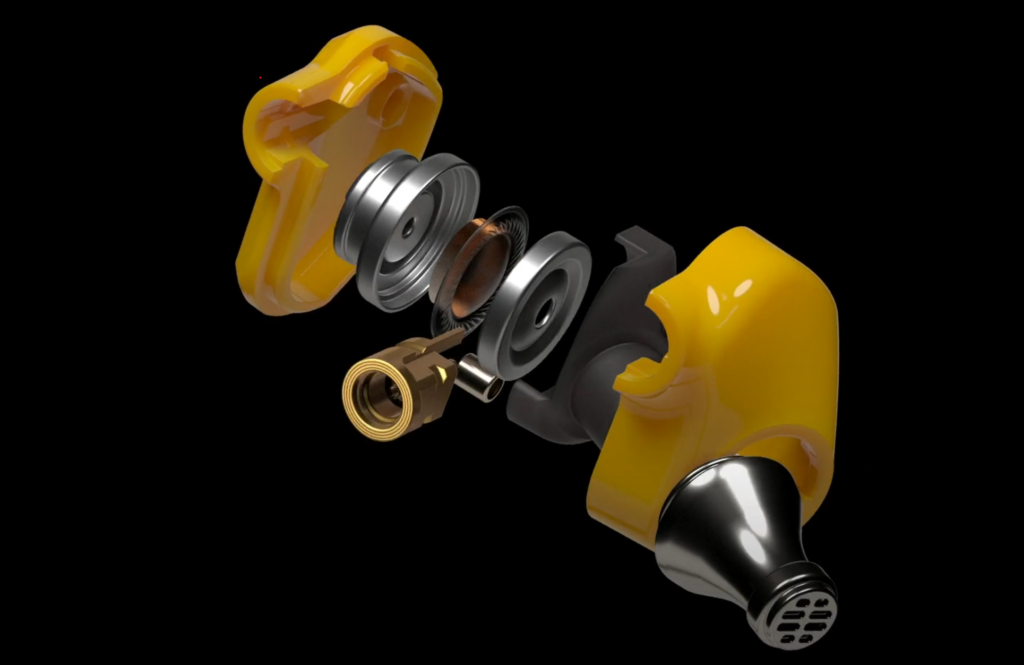
TONALITY AND TECHNICALITIES
The Campfire Honeydew have a strongly V-shaped, basshead tuning. Contrasting to the Satsuma which were rather bass-lite, Campfire Audio put the low-end front and center here.
Speaking of bass, there is a massive +15dB boost in the sub-bass region that starts from around 300Hz. Sub-bass notes cast a haze over the mid-bass, upper-bass, and even some lower-midrange fundamentals as a result. This can be too much for many so an audition is advised. Do note that the bass doesn’t sound as overbearing if you’re listening while commuting (the engine noise etc. cuts down the sensation of the bass).
When it comes to the bass quality, it is a bit of mixed bag. Mid-bass notes lack texture due to the sub-bass haze. However, sub-bass itself is dense, hard-hitting, rumbles with authority, and rather agile thanks to a faster driver-diaphragm. Those looking for sub-bass emphasis will feel at home here.
Sadly, the midrange takes a back seat here, at times even taking the very last seat in the auditorium. Lower-mids sound drowned out and upper-mids are repressed. Fortunately there are no annoying peaks or shoutiness in the mids (not that it was on the cardsdue to the sub-bass boost). Male vocals do not sound wrong, fortunately, but the higher-pitched vocals and female vocals lack energy and articulation. String instruments fare similarly with lower-level details getting lost in the mix in bass-heavy tracks.
The treble response is characterized by a lower-treble peak around 5.5KHz that adds some brilliance to the signature. Cymbal hits sound a bit distant but there is some sparkle to them. Upper-treble is muted and there is a lack of air in general. Cymbal hits sounded fine for the most part, but in some tracks there was a hint of splashiness in the highs. In fast paced tracks with lots of cymbal and hi-hat hits, they tended to get smeared at times. In short: decent treble response, but nothing to write home about.
When it comes to imaging and spatial cues, the Honeydew perform surprisingly well. There is no “gap” when instruments or vocals are panning from left-to-right, and even ordinal imaging (things happening on top-left/top-right etc.) was good. Staging is somewhat narrow but sounds “deep” due to recessed vocals. Stage height is about average. Instrument separation was pretty good as well even though the bass would somehow blur the outlines of certain instruments, e.g. pedals.
Dynamics are also another strong suite. Macrodynamic punch was authoritative with the satisfying bass slam adding to the experience. Microdynamics (subtle changes in volume) are very good as well, though falls slightly behind a few competitors. Lastly, timbre is heavily affected by the sub-bass haze but there is no metallic sheen to the sound unlike some metal-deposited single-DD IEMs.
Bass: 4/5
Midrange: 3.5/5
Treble: 3/5
Staging: 3/5
Imaging and Separation: 4/5
Dynamics and Speed: 4.5/5
FREQUENCY RESPONSE GRAPH
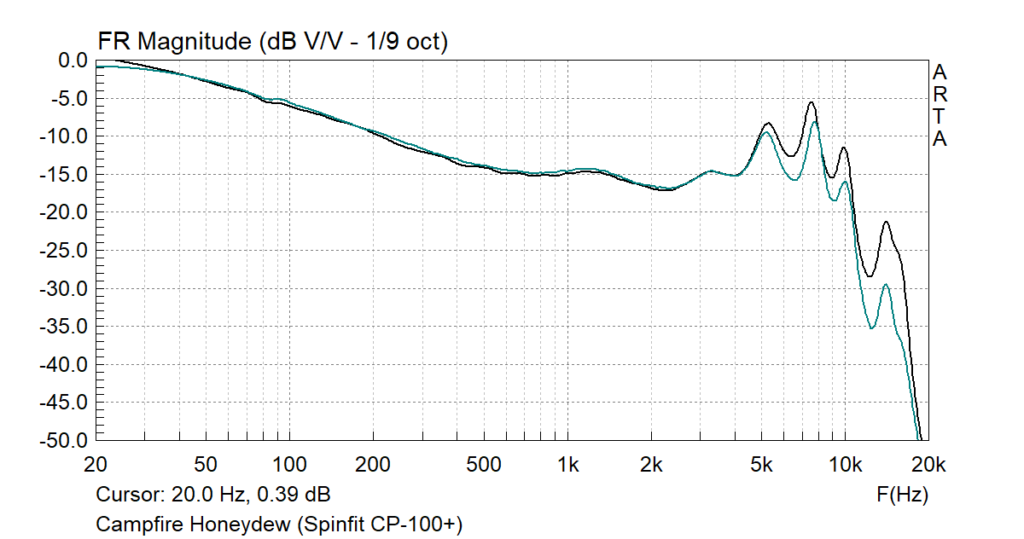
SELECT COMPARISONS
Final’s E5000 are notorious for two things: their power-hungriness, and the sheer amount of sub-bass that they can deliver when properly powered.
In terms of build and design, I am partial to the E5000. They are also more comfortable for me as I prefer bullet-style designs. The Honeydew are very comfortable as well so no extra points to Final. Isolation is slightly better on the Final due to deep fit but it also leaks more sound. Finally, accessories wise the Honeydew wins due to a larger eartips collection.
As for the sound, it’s basshead vs basshead. Honeydew have even more sub-bass emphasis whereas the E5000 have a more impactful, slammy mid-bass punch. The sheer amount of texture in E5000’s mid-bass make them a delightful listen. Vocals are less recessed on the E5000 and have a lush, soothing presentation that has great articulation as well. Honeydew fall behind in the mids as a result.
Treble is where the Honeydew have more presence. E5000 have somewhat darkened treble even though upper-treble response is better than the Honeydew. Staging is better on the E5000 whereas imaging has more precision on the Honeydew. Separation is good on both but Honeydew does it a bit better.
E5000’s Achilles Heel is their source requirement. Few sources can do them justice and the cheapest one (Apogee Groove) costs $200. In that regard, Honeydew is very easy to drive and should better fit those without good sources.
CONCLUDING REMARKS
Campfire Honeydew is slightly more expensive than the Satsuma but have far more character in their sound signature. They aim to be basshead IEMs and Campfire Audio has achieved that target I’d say. It’s not for everyone and the recessed mids will be a point of contention. I am not a big fan of the at-times narrow staging and the lack of mid-bass texture vs some of the competition too.
That being said, I still prefer the Honeydew for commuting over my other IEMs. Their lightweight nature makes them great for long-listening sessions and the extreme sub-bass shelf gets toned down a lot due to attenuation.
I can cautiously recommend the Honeydew as a pair of EDC (everyday carry) IEMs, especially for listening while commuting. For more analytical or technical/tonally correct listen, better to look elsewhere.
MY VERDICT
3.75/5
PHOTOGRAPHY
You find an INDEX of our most relevant technical articles HERE.

